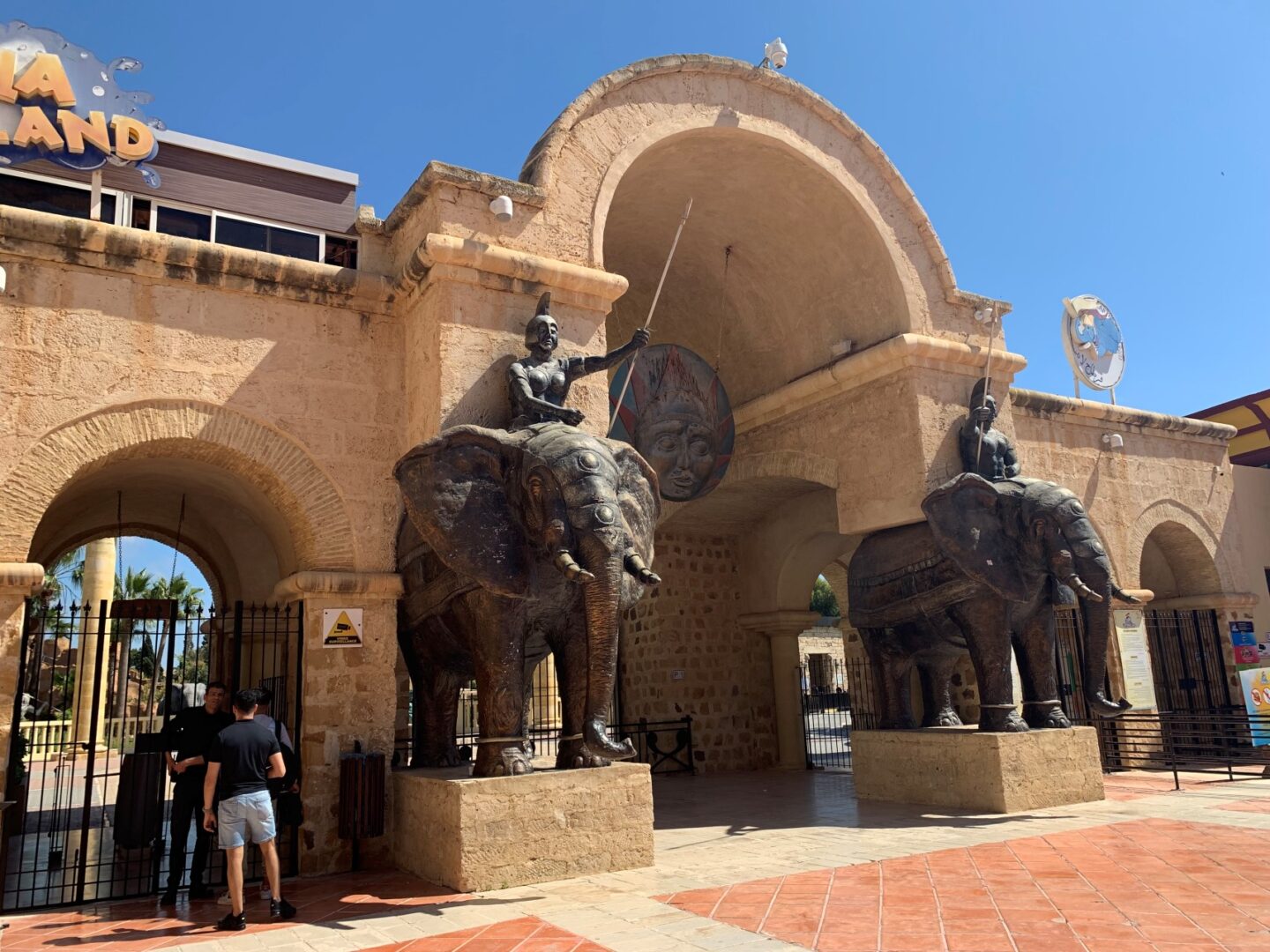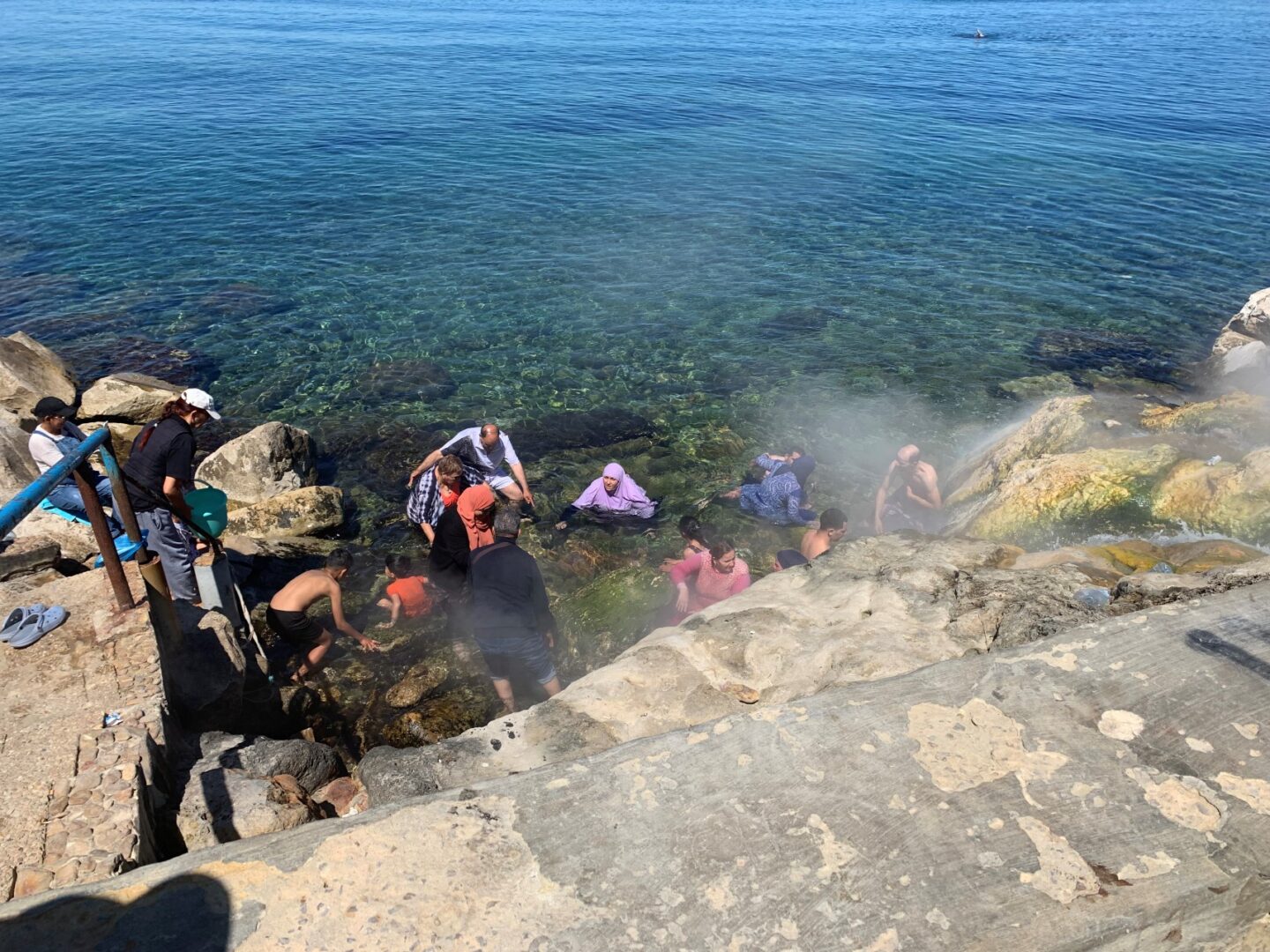Although Tunisia is the smallest country in North Africa, you will find everything that will make your holiday days unforgettable.
Swimming in the sea or hotel pool, getting to know a different culture, various historical monuments, golf in luxury resorts, entertainment of all kinds for kids and adults, gourmet experiences, flavors and smells of typical markets – souks… Everyone will find something they like. If you do not master French or Arabic – two official languages, you can get by with English or a little German. And even without their knowledge, there is no need to worry; the locals have mastered a few Czech or Slovak words.

The First President
You can fly to the Tunisian mainland – to the capital – Tunis, to Enfidha or Monastir, or straight to the famous island of Djerba. The flight takes about two and a half hours to the mainland aand three hours to Djerba. In Tunis, the capital (Tunisia is the name of the country, Tunis is the name of the money), you will feel the spirit of the French capital – especially when walking along Habib Bourgiba Boulevard, named after the first Tunisian president who led the movement for Tunisia’s independence from France. Among other things, he contributed to tourism development by attracting investors from the West to the country. Many hotel resorts, even the most luxurious ones, were created thanks to them.

Bourgiba is also behind the fundamental social changes that have brought the country closer to Europe. For example, he abolished polygamy, introduced many laws that made life easier for women, and allowed them to emancipate themselves. In addition to women with traditional values and dressed in traditional clothing, it is not necessary to meet modern and fully emancipated ladies, not only when it comes to dressing. Today, many also work in positions that previously belonged exclusively to men. So, with Bourgiba, a breath of free spirit came to Tunisia. Tunisians named several important cities after him as a sign of respect and gratitude. In addition to the main avenue in Tunis, you can find the international airport in Monastir, the hometown of Habib Bourgiba, where a mausoleum was built during his life.
Get Lost in Medina Streets

Naturally, government or official buildings are concentrated in the capital, even those we do not have anywhere in Europe, such as the Ministry of Religious Affairs. The medina – an old town originally built by the Arabs at the end of the 7th century – is one of the most attractive places for tourists. The Tunis medina is a UNESCO World Heritage Site. For clarification – in Arabic, the word medina (from the Arabic مَدِينَةmadinah) means a city and refers to the original old center of any city. Thus, it is written with a small “m” in contrast to the Saudi Arabian Medina, which, together with Mecca and Jerusalem, forms the three holiest cities of Islam. The Tunis medina is the largest and oldest market. In several intertwined streets, you will find plenty of shops and stands offering various goods you can only dream about.
Bargaining All the Time
In Arab countries, bargaining is essential to shopping in the markets. Don’t worry, it’s part of local customs, and you should at least try, the locals will appreciate it, and you will buy at more favorable prices. The more efficient you are in this activity, the more respect you will get from the seller. It is also customary to seal a good deal with a handshake. If you do not dare, you can go to brick-and-mortar stores with fixed prices; on the marketplaces, such stores are also marked with the English term fixed price. The exception is food, which is never negotiated. Tunisian ceramics are most often transported. For example, the popular is tajine – a ceramic container for preparing a dish of the same name, olive oil, olives, dates, leather or textile products, spices, cosmetics… Strawberries are also abundantly grown in Tunisia, and if you visit the country during the strawberry season, do not miss the opportunity to enjoy them; they are excellent.

Sidi Bou Said and Carthage
With its blue and white houses, the charming town of Sidi Bou Said, part of Tunis, resembles the Greek Santorini. It is located on a peninsula overlooking the Mediterranean Sea, and you will find many restaurants, cafes, small art galleries, and shops. In Tunis, you should not miss a visit to the archaeological site on Byrs Hill with the remains of ancient Carthage. Originally, there was an ancient fortified citadel above the Phoenician port. Carthage was founded, and later, its first queen was Dido, sister of the Phoenician king Pygmalion. The legend says the mischievous local Berber chief offered her as much land as the skin of one ox would cover. However, the astute Dido got him. She cut the skin into thin strips and put them on the ground until she “wrapped” the whole mound with them. Today, Carthage is part of the capital, forming one of its suburbs. The most famous are the remains of the foundations of Antony’s baths, which were built around 160 AD and had an area of about 18,000 m². On the north side, they are adjacent to the presidential palace, which is, of course, monitored and guarded. To avoid inconvenience, never turn your camera in that direction; it is prohibited to take pictures.

Spa and Quarry
You can also discover interesting places on the Cap Bon peninsula. On its west coast lies the famous spa town of Korbous in Nabeul Province. It is nestled in a gorge and has been popular since the Roman Empire, as evidenced by the remains from this period and the inscription currently on display at the Bardo National Museum. There are many springs, both hot and cold, sulfuric and chlorinated. Hot springs also flow directly into the sea, allowing visitors to use places other than hammams. People with musculoskeletal and skin diseases often visit here. Currently, extensive reconstruction is underway, and plans include building new hotels, a promenade, a new road, and a modern spa center to attract foreign tourists, especially Arabs who frequent the area. At the northern end of Cap Bon, near the town of El Haouaria, there are quarries. For centuries, building stone has been mined here and transported by sea to the area where it was used to construct ancient Carthage or the medina in Tunis. There are several caves and underground spaces, but for safety reasons, they are fenced, and entering them is at your own risk.

The Mysterious Kerkouane
It is located in the northeast of Tunisia, near the My Bon peninsula. It is the only Punic city that has survived as the Phoenicians founded it. For mysterious reasons, neither the Romans, the Vandals, the Byzantines, nor the Arabs ever came here. Tunisia was under the rule of the Ottoman Empire for 200 years, but neither the Turks nor any pirates appeared here. Two French archaeologists accidentally stumbled upon the city in 1952. The inhabitants of Kerkouane probably left around 250 BC, and since then, no one has ever lived in the city again. It existed for about 400 years and was one of the most important Phoenician sites. Remains of houses have been preserved to this day. The floor plans and remains of the walls indicate that it was a sophisticated planning system.

Kerkouane
It was listed as a World Heritage Site by UNESCO. The city itself stretched directly to the sea. For archaeologists, it is a mystery why it never had a port. However, it lies immediately by the sea. It was surrounded by double walls, between which there was about 7 meters of space where soldiers could move, there were warehouses… Nearby, they also discovered a cemetery, which is also on the UNESCO list. The city had a checkerboard plan; all villas had a quadrangle form, and a long corridor leading from the main street to the inside of the house. And what was very strange was that baths and washbasins were at the entrances. The ancient inhabitants had an elaborate system: rainwater collection and distribution through pipes, washbasins, and bathtubs. They decorated them with a pink mosaic. There were also public buildings and temples. The city’s protector was the goddess Tanit, who was often depicted as a simple symbol of the doll and appeared on various votive stelae.
Hand-made Harissa
A stop in Nabeul at Imed Attig’s to taste harissa, an original Tunisian specialty, is worth mentioning. Attig devoted every effort to this product, and thanks to him, at the end of last year, UNESCO entered harissa on the list of the intangible cultural heritage of Tunisia. Attig has even been organizing the Harissa festival for a long time, of which he is the director. Traditional harissa is a paste of ground red hot peppers grown in Tunisia and dried in impressive garlands in the sun, garlic, olive oil, and salt. Imed Attig created an impressive harissa portfolio by enriching it with other variants. It adds various spices and herbs to the original recipe, such as thyme and ginger; some types of Harissa are also made from smoked peppers and a spicy or sweet variant. At the Attigs’, on the ground floor, there is a small private museum with a shop, where Imed Attig willingly and passionately tells visitors about harissa and demonstrates the traditional production method. Various artifacts documenting the history of harissa production are exhibited here. You can taste different types and finally buy what you like. These are hand-made products that are also an original gift.

Fun and Discovery
Hammamet is one of the most popular and oldest resorts in Tunisia. The city was founded in the 15th century on the site of originally two ancient settlements. In the historical center, history lovers will be delighted. You will find, for example, the remains of the walls, the mausoleum, the mosque, the traditional market…

If you are looking for entertainment of all kinds, one of the amusement parks is waiting for you, where everyone, children and adults, will enjoy themselves. What is interesting is the replica of the Hammamet medina – Medina Medditerranéa with Carthageland Park. It is a comprehensive project of a company that owns a park and three hotels, one directly in the medina. If you stay at one of these hotels, you can access all attractions for free. You will find everything – markets, replicas of various famous Mediterranean buildings, such as the Golden Tower in Seville, plenty of attractions, restaurants, cafes, a cinema, and two museums – the Museum of Civilization and the Museum of a Thousand and One Nights… At the main entrance are statues of elephants and the famous Carthaginian commander Hannibal – a famous figure from the Punic Wars. Surely you know the famous phrase “Hannibal ante portas” – Hannibal at the gates, which first sounded from the throats of the Romans during the Second Punic War, when Hannibal with his army and elephants appeared at the gates of Rome. Over time, the scream transformed into a general warning of imminent danger. An unforgettable evening in Carthageland can be enjoyed in the Sheherazade restaurant theatre, where you will enjoy great meals and a dance performance about the famous princess who saved her life by telling stories.
Text and photo: Miriam Bartošová














































































